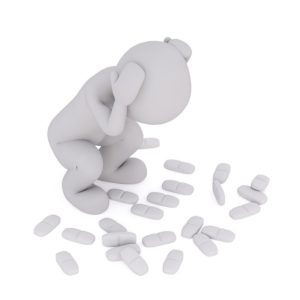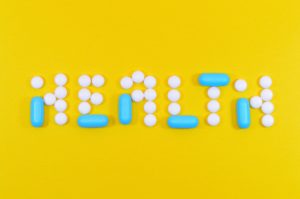Carcinogens in Medications
Carcinogens in medications don’t spell out HEALTH, but quite the opposite.
In November 2019, some batches of Zantac (or generic ranitidine) were recalled because of contamination with NDMA (N-nitrosodiethylamine)—classified as a human carcinogen. In April 2020, FDA requested all these products to be removed from the shelves.
Previously, in 2018, a few “members” of blood pressure medications known as ARBs—with names ending in sartans, primarily valsartan, but later on some batches of losartan and irbesartan, were also recalled because of contamination with the same NDMA carcinogen, but other impurities as well, belonging to the group of chemicals called nitrosamines.
The same nitrosamines can contaminate other inactive ingredients called ethanolamines. These are mostly used in prescription creams and ointments, but in cosmetics too.
From December 2019 and throughout 2020, almost every month there were new reports about metformin batches, being recalled because of contamination with the same carcinogen—NDMA. As if people with diabetes don’t have enough challenges, here is another one. They cannot stop this medication, ideally the pharmacists will have another manufacturer they can order from. Many of them may take ARBs as well, so they needed to replace those too in 2018.
Some of the manufacturers voluntarily pulled the metformin off the pharmacy shelves. Mostly of the affected batches were the extended-release type, but some with immediate-release as well. Apparently, the metformin recalled was produced outside the US, mostly in India and China. That’s probably why the same carcinogens in medications were detected in batches from some of the EU countries.
What surprised me was a statement from FDA in 2019, when metformin contamination was first reported: “NDMA is a common contaminant found in water and foods including cured and grilled meats, dairy products and vegetables. Everyone is exposed to some level of NDMA.” Dairy products and vegetables, really?
The statement continues “The acceptable daily intake limit for NDMA in the U.S. is 96 nanograms. Genotoxic substances such as NDMA may increase the risk of cancer if people are exposed to them above acceptable levels and over long periods of time, but a person taking a drug that contains NDMA at-or-below the acceptable daily intake limit every day for 70 years is not expected to have an increased risk of cancer.”
The last sentence may be true, but NDMA being accidentally part of some prescription or over-the-counter pills just adds to higher amounts of the daily dose. I don’t think piling it up is ok just because we’re expose to it anyway from other sources.
How many of us do know what’s wrong with the grilled or cured meats? Are there signs warning us about something like this when we buy them? And look at the next statement, according to ATDSR: “The primary sources of human exposure to NDMA are tobacco smoke, chewing tobacco, diet [cured meats (particularly bacon), beer, fish, cheese, and other food items], toiletry and cosmetic products (for example, shampoos and cleansers), interior air of cars, and various other household goods, such as detergents and pesticides.”
At present, there is no public information that other medications are tested for these possible carcinogenic contaminants. What prompted these tests regarding ARBs, Zantac/ranitidine, or metformin, I couldn’t figure out from the news or professional medical websites. It makes me wonder why, all of a sudden there was a decision to test these medications. Are there other carcinogens in medications? Or the same contaminants in different ones?
One thing I did learn during my previous years of specialty literature research, was that other so-called inactive or inert ingredients used in medications and personal care products, can also contain carcinogenic contaminants from a different “parent” component, called ethylene oxide. This is an established human carcinogen, according to the National Toxicology Program.
The derivatives from this carcinogen can be large components (polymerized), with names like polyethylene glycols (PEGs), polysorbates, polaxamer, or macrogol. Others, are smaller structures formed with ethylene oxide and ammonia (such as ethanolamines). or ethylene oxide and phenol (phenoxyethanol). All these triggered my attention because they were worsening my joints.
Enough chemistry for now! The point I’m trying to make is that, although the newly formed components have new properties, the carcinogenic ethylene oxide and other toxic by-products (dioxane being a famous one), remain as contaminants (impurities) that are not completely removed, although they should. Therefore, other untested carcinogens contaminants in medications may be present.
Speaking of the newly synthesized products that acquire new properties, these don’t make them more “digestible” for us, our body cannot dispose of many of them and often can accumulate in certain structures. Thus they may have unwanted health effects in the long run.
Most of the time, the cosmetic grade ingredients with complicated names and formulas have more impurities than exactly the same ingredients used in medications. Although lately I noticed that many organization geared towards consumers’ safety are finding many cosmetics to have these impurities, I’m not aware if any testing is conducted for medications regarding the very same contaminants.
You probably wonder, just as I did, why are these impurities not removed. Apparently, especially for cosmetics, the regulating agencies have instead of requirements—that could be reinforced by law, have more recommendations—that cannot be reinforced.
There may be more strict with the limits they impose for medications, but the fact that carcinogens in medications are detected in numerous batches of products is unsettling. They are subsequently pulled off the shelf every couple of months, but this makes me wary about what’s incorporated into the medicines we take, prescription or over-the-counter.
It always puzzles me when I check the list of inactive ingredients (also called excipients), is the number of these used for the very same active substance. Some manufacturers add 3-5, but others incorporate 10-12! Are they really all needed? If so, does it mean those with fewer ones don’t work the same?
Based on my personal experience with the pills I need to take, those with less inactive ingredients work just fine and often times the pills are smaller, thus easier to swallow. Moreover, the fewer components make it less likely to develop a reaction to any of the ignored excipients.
Keeping in mind that the ethylene oxide-derived ingredients (and many others) are widely used in cosmetics, laundry and cleaning foods, and medications, a logical question comes next: Is there something we can do to avoid these?
For cosmetics—yes, there are healthier alternatives. The same is true for laundry and cleaning products. Foods are also an area where healthy (or at least healthier), alternatives are available.
For medications, it’s more difficult to make changes because the prescribing doctors have to be a lot more aware of these “safe” ingredients.  The pharmacists should also get past rolling their eyes when questioned if the same generic from a different manufacturer can be obtained.
The pharmacists should also get past rolling their eyes when questioned if the same generic from a different manufacturer can be obtained.
We should also keep in mind that lately, each pharmacy chain for each medicine prescribed, can order only a few generics from their suppliers. Let’s not forget the other major factor that comes into play, which is the prescription coverage that further limits the options. Some medicines are not covered even in their generic version, let aside brand names. The idea is the medicines we take should help our HEALTH instead of having carcinogenesis potential.
Your FREE gifts to download:

